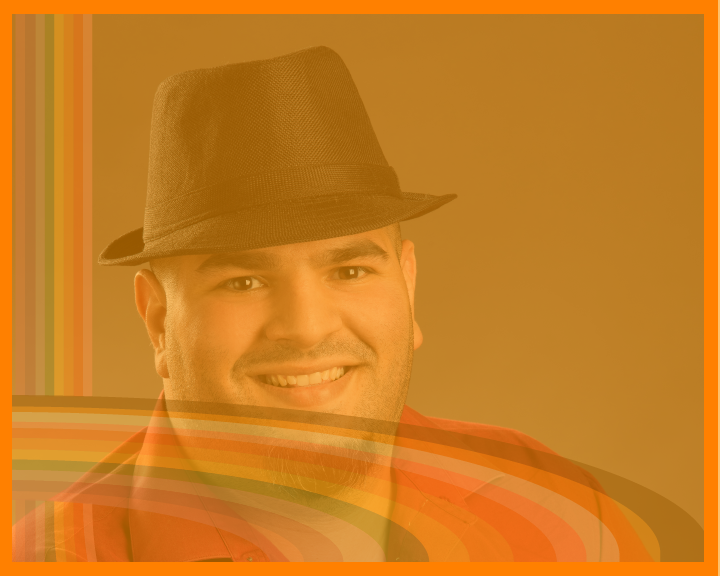I see men as trees.
Mark 8:22-26 is a passage that has lived with me for a very long time. In my deliverance years, I used these verses to comfort myself when I still felt ‘same-sex attracted’ after so many aching prayers. It takes time. I even preached a sermon one evening, when they had the up-and-coming ministers offer a word of exhortation. Healing is a process, I preached, you only have to trust the Jesus of Bethsaida.
In this pericope, we encounter Jesus and the disciples, on a campaign of performing miracles. They arrive at Bethsaida, and following the usual trajectory, the townspeople bring to Jesus a man in need of healing. It should be noted that Jesus leads the man outside of the village. One might assume a privacy of experience, but there is no evidence to suggest that the disciples are not also present in this scene. Examining the passage through a theatrical lens (which is, in essence, a queer lens) we might view verses 23-25 as an aside; meaning that as the characters are physically removed from the surrounding action of the village, they are also abandoning the metaphysical principles thereof. In essence, we know that we are in a new place, with new rules. In an actual theater, the characters would likely move from, say, stage left to stage right. This movement requires a suspension of disbelief. We are invited, and perhaps urged, to set down our ingrained understandings of how time works. To queer our minds for the ensuing action.
Examining the passage through a theatrical lens (which is, in essence, a queer lens) we might view verses 23-25 as an aside; meaning that as the characters are physically removed from the surrounding action of the village, they are also abandoning the metaphysical principles thereof.
And the following events do not make sense—at least with what we have canonically believed about Jesus. He is, as we used to sing in my childhood church, The Great Physician. In the other passages about the healing of blind people, such as John 9:1-12, Jesus touches their eyes and they can see. Why then would this all-healing Jesus need to touch a man’s eyes twice? Perhaps the whole scene, then, functions as an aside from the Jesus who appears in the Synoptic Gospels. We are outside of the village and outside of the Gospels—which is queer and unruly and precarious.
At the first spit-and-touch sequence (here, Jesus spits into the man’s eyes), Jesus asks him, like some optometrist from antiquity: what do you see? And the man’s answer turns our canonical expectation on its head. He does not see with a sensate acuity. Instead, he responds: I see men as trees. More healing is required. Then, Jesus touches him a second time, and his sight is restored.
At the first spit-and-touch sequence (here, Jesus spits into the man’s eyes), Jesus asks him, like some optometrist from antiquity: what do you see?
But in between verses 24 and 25 is a strait of possibility, and I floated there for a long time. I had followed the Pentecostal command to seek healing for my eyes—my homosexuality, my way of seeing the world, and the ways in which I was not seeing other men rightly. That ‘inter-testamental’ period was full of ache. It was like living between two slabs of earth, with the hope of finding land again. That shore, I believed, would bring me into a land of normalcy: a wife with long black hair, a home in a subdivision on a lake, obedient, well-groomed children. It was a new suburban priesthood of the home. If I could only stop seeing men as trees.
To be sure, after miles of sleeping ‘in heat’, where my body betrayed me by night with all sorts of sexual and chemically sweet dreams, I realized that I was not going to make it to that new shore. And that Jesus was not going to touch me again. At least not in the ways that would give me the life that I thought I wanted.
So now, here I write. I am a 30 year-old Black gay man living in Nashville, Tennessee. To echo the haunting title of Mary Church Terrell’s autobiography, I am a colored man in a white world. And in white gay Nashville, a colored body in a forest of white. My sexual encounters have been sparse here, in comparison to what they could be. I know that because I have travelled to other cities where, as we say in Black gay lingo, ‘the girls were calling my name’. But regarding the encounters I do have, an old question returns to me: what do you see? I probe myself with that inquiry that just won’t leave me—am I seeing ‘men as trees’ or am I seeing them rightly? By this, I mean, am I seeing the gay men on the apps as a mere opportunity, or do I care for their humanity, as well?
To echo the haunting title of Mary Church Terrell’s autobiography, I am a colored man in a white world. And in white gay Nashville, a colored body in a forest of white.
To be sure, I am not against hookups. And I am not reflecting on this passage in a way that is antagonistic to purely sexual encounters. The ‘purely sexual’ is, in my estimation, the ‘truly human’. One does not have to be sexual to be human, but if one is sexual one is operating out of an expression of humanity. This being established, I do not think the problem is about a nebulous body count, for who can place limits on how many times we should remember that we are human? And I do not think the problem has to do with commitments surrounding the sexual encounters. Instead, I think it has something to do with individuals operating beneath a frequency of love—love in the most cosmic sense. Operating below that frequency, or perhaps, in this conversation, without eyes of love may mean that one only sees a collection of body parts. Trees, for your usage, and your shade, and your building.
Trees, for your usage, and your shade, and
Yet, I struggle with even my own criticism. What if having sex with someone because you like their thighs or their shoulders or their whole body is an adoration of the human form? But then, the body and the mind are one, which is over and against a Cartesian approach of embodiment. And if they are one, how can you engage with the body and not the mind? Would you not have to deny engagement with something—refuse connection, perhaps, with their mind, therefore dehumanizing them? I do not believe that to honor humanity in the space of the hookup is to maintain some time of relationship with the individual[s]. I think that too often, we have tried to rebuild our sexual ethics with the Evangelical master’s tools—meaning that we have cobbled together some relational requirements that would then make the hookups permissible. I want to move beyond all of that.
What do you see? I know that I, as a Black gay man in the South, have wondered this standing naked before white lovers. Do you see the body that has drawn you to me? Do you see a tree jutting up and out—a tree that you can use to stimulate your imagination, when with your eyes closed a few minutes hence, I will have no idea where you are and who you are with because you have barred me from your mind? Or, can you see me with a textured acuity—poet, writer, Black boy, scared?
Kashif Andrew Graham is the is Outreach Librarian for Religion and Theology at Vanderbilt Divinity Library. His reading and writing interests are queer & Black lit, the 1920’s novels of racial passing, and the modern South. He holds a Master of Science in Information Sciences from the University of Tennessee at Knoxville, a Master of Arts in Church Ministry from the Pentecostal Theological Seminary, and a Bachelor of Arts in English Honors Literature and Spanish Language and Literature. He is currently working on a novel about an interracial gay couple living in East Tennessee.



Unbound Social